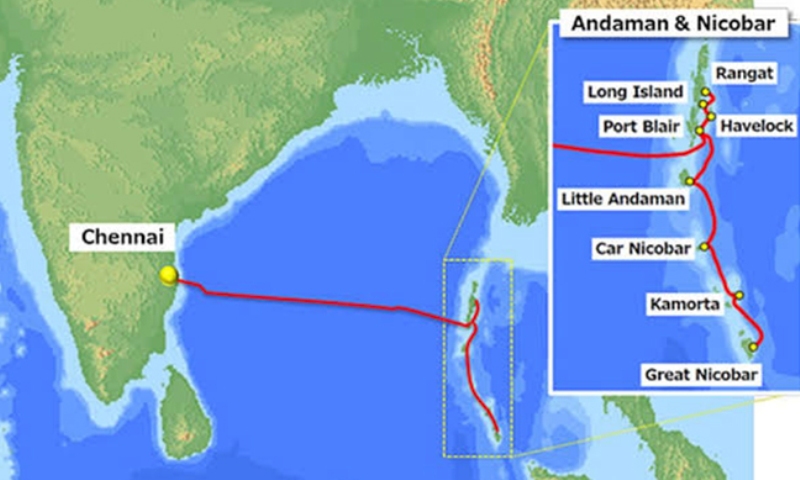When Dubai built the Jebel Ali Port in the late 1970s, skeptics called it a folly in the desert. Today, it is the cornerstone of the Gulf’s economic success. Drawing that parallel, maritime historian Nick Collins wrote on X, “When Dubai built Jebel Ali, many thought it madness. Now it anchors the Gulf economy. India’s Nicobar project may not be as momentous, but it’s a bold move and part of a potential maritime focus in which Delhi’s bureaucracy lets Indian entrepreneurship take India forward.”
His words capture the ambition — and the risk — behind India’s Rs 72,000-crore Great Nicobar Project, one of the country’s most audacious infrastructure ventures in recent decades.
Strategic Bet
Approved by the Union Cabinet in 2021, the Holistic Development of Great Nicobar Island aims to turn a remote, biodiversity-rich island into a bustling transshipment and trade hub. The plan covers 166 sq km — roughly 10% of the island’s area — and combines four massive components:
- A transshipment port at Galathea Bay, capable of handling up to 14.5 million TEUs (20-foot equivalent units) annually, intended to rival Singapore’s throughput near the China-influenced Malacca Strait, which channels nearly a quarter of global trade.
- A greenfield international airport with a 3,300-metre runway for wide-body aircraft, improving connectivity to India’s eastern seaboard and beyond.
- A 450 MW power plant, blending gas-based and solar energy to ensure energy independence.
- A planned township spanning 16,569 hectares, designed to accommodate up to 65,000 residents, including workers and migrants.
The project, led by the Andaman and Nicobar Islands Integrated Development Corporation (ANIIDCO), is envisioned to unfold over 30 years.
Economic gateway
Experts see the project as a move to capture 20-30% of regional cargo currently routed through foreign hubs, reducing India’s dependence on ports like Singapore and Colombo.
But beyond commerce, the project carries a strategic undertone. Situated at the southeastern edge of the Indian archipelago, Great Nicobar sits close to the Six Degree Channel, a crucial shipping corridor. The port could serve as India’s frontline base in the eastern Indo-Pacific, enhancing surveillance and response capacity amid increasing Chinese naval activity.
“This is India’s counter to China’s ‘string of pearls’ — not through confrontation, but by creating hubs of connectivity and commerce,” said Collins, adding that the island’s deep natural harbour gives it a logistical edge.
Balancing development & ecology
However, the ambition comes with ecological and ethical challenges. The island is part of one of the world’s most biodiverse regions and home to the Shompen Tribe, a Particularly Vulnerable Tribal Group (PVTG) with a population of barely 300. Conservationists have raised alarms about deforestation, coastal erosion, and risks to endemic flora and fauna.
Environmental clearances have been partially opaque — with sections of the NITI Aayog’s pre-feasibility report (2021) blurred or redacted on the official clearance portal. Critics argue that the fragile ecosystem could face irreversible impacts.
Test of India’s maritime vision
The Great Nicobar Project reflects India’s intent to emerge as a maritime power in the Indo-Pacific, in step with initiatives like Sagarmala and Gati Shakti. Whether it becomes India’s Jebel Ali — as Collins suggests — will depend on how deftly New Delhi manages the balance between development, defence, and ecology.
If successful, Great Nicobar could turn India’s geographic advantage into a strategic and economic engine — a new anchor for the Bay of Bengal and beyond.

